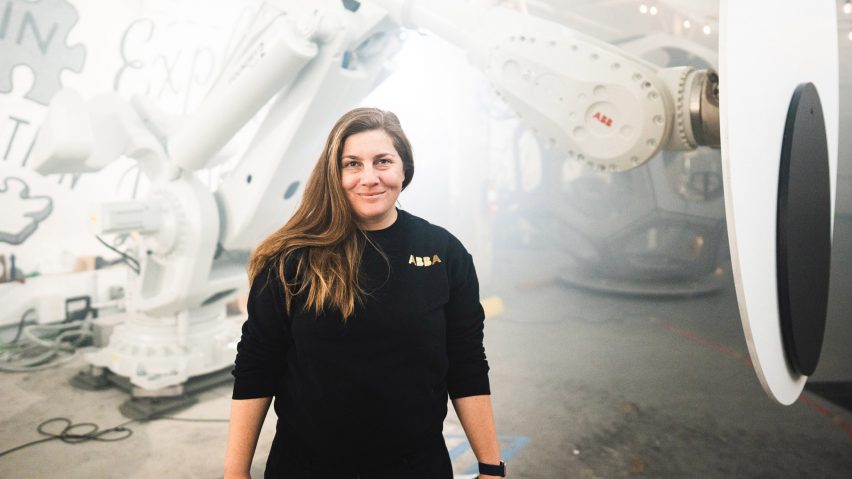
Robots should be "good neighbours and good citizens" says Madeline Gannon
People are asking the wrong questions about humanity's relationship with AI argues Madeline Gannon, a designer whose work focuses on communication between robots and people.
Gannon leads the research studio Atonaton and is known for her work with robots, which she has previously programmed using custom-made software to give them seemingly human traits.
When it comes to artificial intelligence (AI), she told Dezeen that what a lot of people are searching for is "consciousness and companionship".
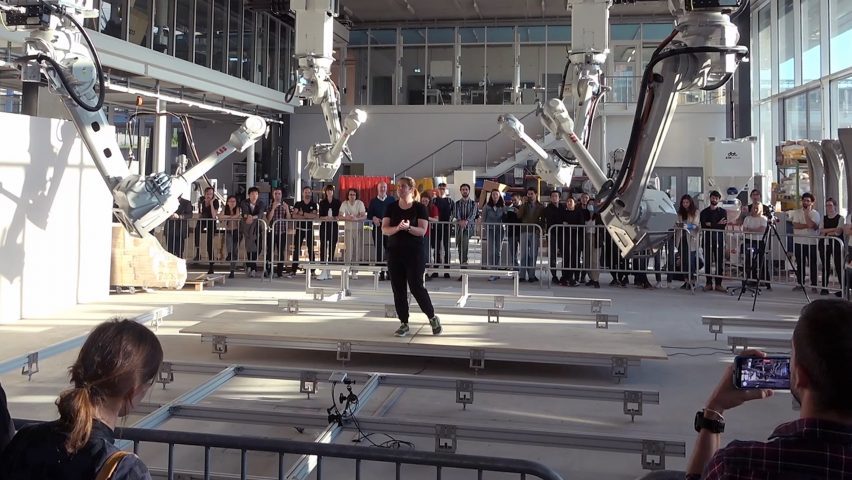
"In my work, by making these robots and breathing life into them, I've been doing simulated consciousness," she explained.
"Simulated consciousness has been around in video games, math and generative growth algorithms for decades, but having that in your physical space is something quite new that we don't quite know how to deal with yet."
Gannon points out that people such as animators and puppeteers have been able to simulate consciousness for hundreds of years, and argues that we are asking the wrong questions about AI and consciousness.
"The question of 'is it actually conscious, is it actually sentient' in my mind isn't really the right question," she said.
Instead, she says, we should ask: "What does it trigger and what can it unlock for us? What's our response to it?"
"My robots are distinctively obnoxious"
Gannon's work in robotics has often anthropomorphised robots through the use of custom-made software.
This makes them behave in ways that make them seem friendly and human or animal-like, something that Gannon thinks can make people working with robots feel more of a rapport with them.
But she points out that as autonomous machines become more common in our daily lives, the technology could also have other uses.
"There are huge swathes of time between when you tell them [the robots] to do something, when they're going to do it, and when they've done it," Gannon said.
"So it would be great if they were also good neighbours and good citizens and knew how to socially behave in all of that in-between time outside of a task."
"For my work, I focus only on the in-between time or the tasklessness of it all – you can imagine that for a machine, that's going to be 95 per cent of the day, them not doing shit," she added.
"So it would be great if it was just nice to be around them."
Gannon thinks of her robots as "handcrafted algorithms" and argues that even with AI design, there is a personal signature in the work.
"There is some level of automation in there, but sometimes when I'm standing in front of them, I feel like Jane Goodall observing nature in the wild – and then I can just put on my engineering hat and go tinker around with their brains and tweak and tune to get the effect that I want," Gannon said.
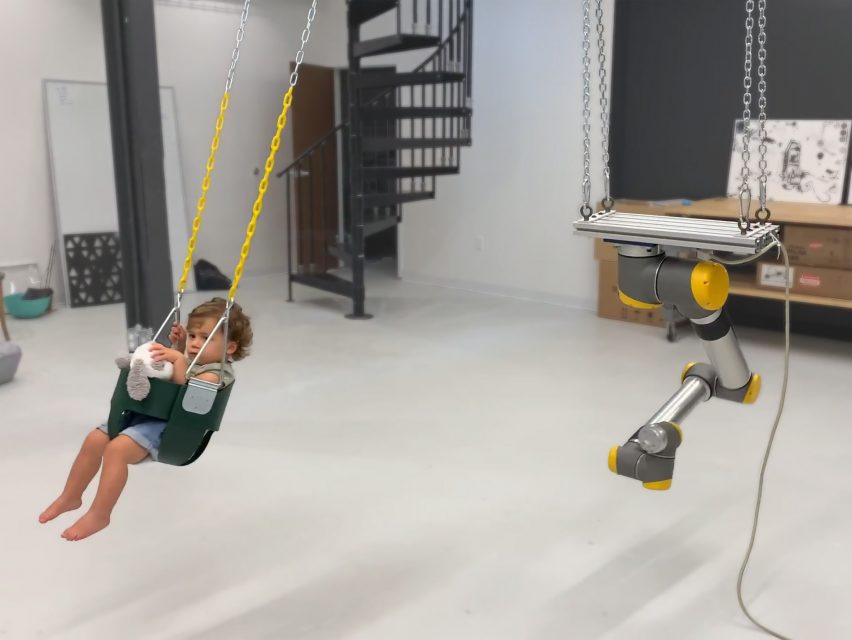
"My fingerprint is all over that," she added. "My robots are distinctively obnoxious when you're around them. And I have to imagine that's a piece of my personality embedded within that, you know; they're in your face."
Among the designs she created recently is URSA, a swinging rig that she designed for her daughter Lena, a "coronavirus pandemic baby" who didn't have many opportunities to play on a swingset with other kids.
The way in which she designs the software means that it is also constantly surprising her, she explained.
"I'll make something kind of standard, and then I'll add a layer that makes it noisier and I might add another layer on top that makes it noisier," she said.
"And by the sixth or seventh iteration, that whole system is so obscure and complex that even as the programmer, my brain can't handle all the calculations that are happening."
"Boundless optimism" for potential of AI
For Gannon, the future of AI is positive, and she argues that we need to break out of half a century's worth of dystopian narratives about the technology.
Though people may worry about the military uses of robots and AI, she says this is often how new inventions in the industry come about.
"With any new technology that comes out, it usually started with funding from the US military," she said.
"The internet did that and robotics have done that as well – the best-selling, most-loved robot of all time is Roomba. And its parent company got started as a bomb disposal firm."
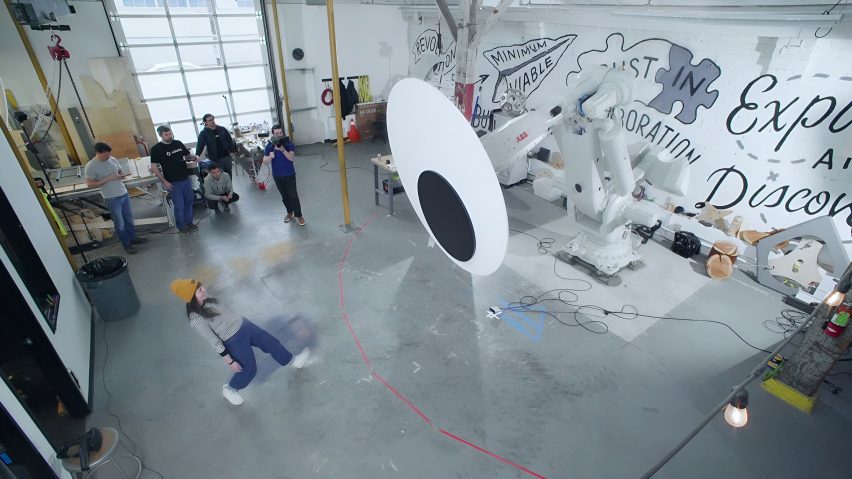
These innovations then trickle down and become common in more industries, according to Gannon.
"You also have a lot of work on exoskeletons for soldiers and that turns into medical technology, so now we have exoskeletons for stroke recovery and for ergonomy, making workers in factories not be injured and be able to lift things a little higher," she said.
"When they become that ubiquitous, you don't think of them as a robot. You don't think of a brace as a robot."
However, Gannon believes that the technology needs the involvement of creators outside the group of people who are currently working on it.
"I have boundless optimism for the good that this can do," she said. "We critically need the ability to do more with less and artificial intelligence, robotics, these technologies have the potential to help that mission."
"What's lacking now is imagination, which architects, artists and designers all have, as well as creativity in application and the number of voices that are thinking about those applications," Gannon added.
"Because right now, there's only a narrow group of people setting the narrative for what we can do to impact our world and we need more voices."
Robots can help "enchant spaces"
With Apple unveiling its first spatial computer, the Apple Vision Pro, earlier this year, Gannon believes spatial computing – which includes virtual and augmented reality and is used for self-driving cars and advanced robotics – can soon become more widely used.
For the past few months, she has been creating an open-source toolkit to help make it happen and to make robotics both accessible and useful to creative people.
Having trained as an architect, she believes there are benefits to making spatial computing easier to use for people outside of the tech world.
"There's the computing part of it, but there's also the spatial part of it," she said.
"Name a discipline that has more knowledge gained over 500 years about the spatial aspect than architects and designers. If we just made bridges to computing, there would be a bigger table and a lot more room for artists, designers and architects to have a say in how this technology impacts society."
The photography is courtesy of Madeline Gannon.
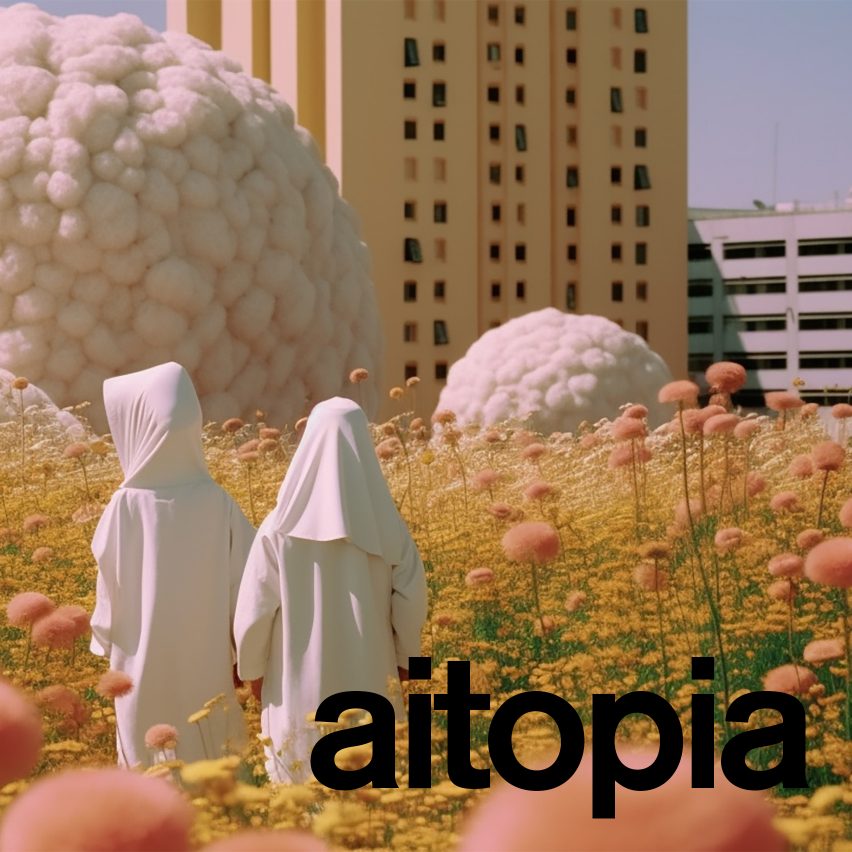
AItopia
This article is part of Dezeen's AItopia series, which explores the impact of artificial intelligence (AI) on design, architecture and humanity, both now and in the future.
Dezeen in Depth
If you enjoy reading Dezeen's interviews, opinions and features, subscribe to Dezeen In Depth. Sent on the last Friday of each month, this newsletter provides a single place to read about the design and architecture stories behind the headlines.